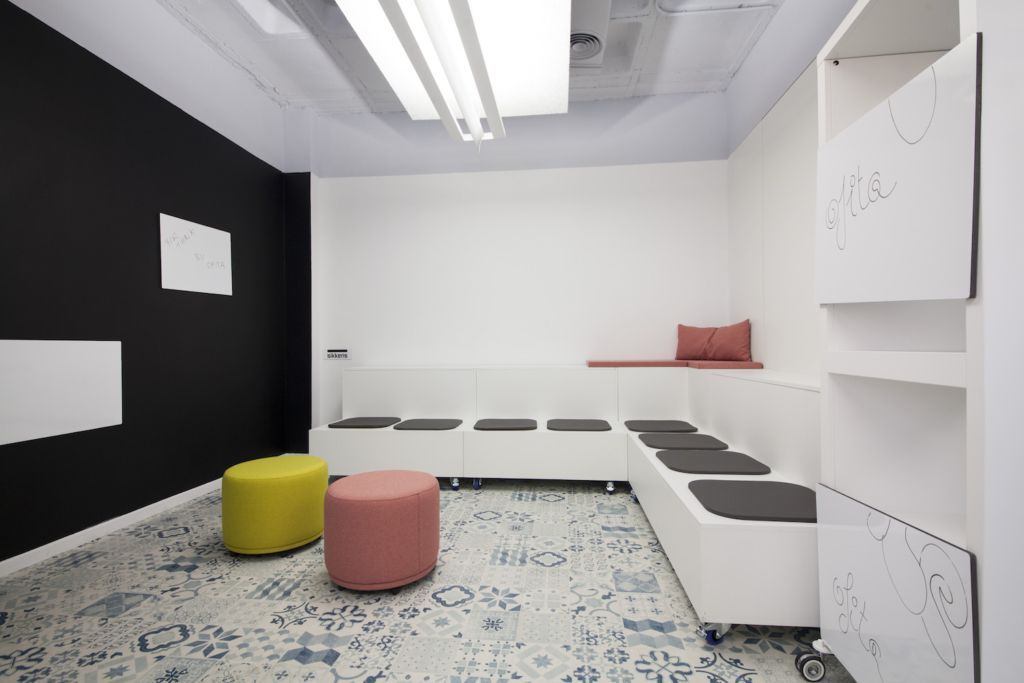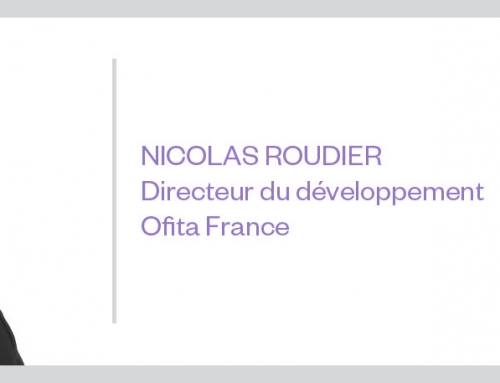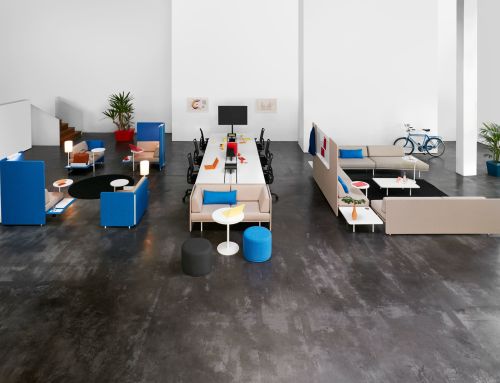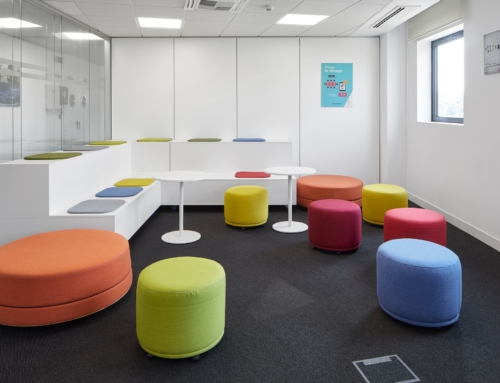Flexibility rules in the new working methods of the VUCA World.

What is the VUCA World? How are offices in the VUCA World? Several years ago, in collaboration with BICG (The Business Innovation Consulting Group), we published the study “Work in New Economies” a complete document where we anticipated the trends –nowadays confirmed-, regarding working methods and working spaces consequence of the so called “new economy”. Little by little we will reveal in our blog the outcome of this exhaustive study.
To start with we would like to point out, as way of introduction, that the new economy has denoted a great change -from being mainly based on manufacture and industry to being based on knowledge- considered by many as a revolution and by others as the VUCA World.
A revolution which has led to a different world constantly evolving known as the VUCA World -in English Volatility, Uncertainty, Complexity, Ambiguity-. In this scenario, companies have been obliged to prepare their structures, cultures and management methods to compete in this volatile, uncertain, complex and ambiguous environment we have had to live in.
How are offices in the VUCA World ?
The VUCA World is the product of the unstoppable advance of information technologies and communication as well as the globalization of relationships, competence and game rules.
At present we live in an interconnected world where distances and times have lost importance. But, above all, the VUCA world represents permanent change and the replacement of what is tangible by what is intangible: ideas, knowledge, speed and flexibility have turned into the sustainable competitive advantages of this new Era. Companies’ competitiveness is based more on their staff, on its response capacity, on the quality of the service and on the development of their key skills rather than on elements such as the access to physical resources.
Changes of the VUCA World affect both organizations and individuals and the relationships between them. Change is a constant and core values to compete and survive in this new global environment are called dynamism, innovation, creativity, knowledge, flexibility, mobility, adaptability, learning, constant improvement and rapidity.
Within this context we can highlight some of the most relevant changes with regard to work:
- Greater flexibility: “Work wherever and whenever you want”.
- Greater importance of people.
- Implementation of dynamic methodologies which enable quick responses and generally favor innovation processes.
Flexibility and mobility
In the VUCA World the concept of work has radically changed: “work” is not “when”, “where” or “how much” any more, it is rather “what”, “how” and “with whom”.
Therefore, we are witnessing the strong development of working methods which are the synonym of greater flexibility and mobility (in time, contracts, places and duties). Flexible schedules, part-time work and temporary workers are some of the most extended options.
Another extended working method is the creation of virtual teams conceived to carry out a specific project or activity.
Within this new flexible working methods we can mention the “multi-skilling” (workers are provided with knowledge and different skills allowing greater functional flexibility) and the exchange of professionals between the different business units, both at a local and international level, to find new perspectives or skills offering creative solutions to the ever changing environments.
Moreover one of the phenomena with the most important development in the VUCA World in our time is teleworking and under its umbrella we include several types of remote work:
Occasional teleworking or telecommuting: It is the most common and less risky teleworking method which combines traditional offices with occasional work at home.
- Teleworking at home: Most part of the time work is done at home, making periodical visits to clients or companies.
- Teleworking in satellite offices: Which may or may not be owned by the company and which may be for their exclusive use or to share its use with other companies. There are several types of satellite offices:
A modality if the neighborhood office: people who live close by and work for different companies establish a joint office, sharing the space, the resources and the expenses. Another variant are companies themselves generally big companies, who create satellite companies in strategic locations where many workers live (drop-in-centers).
Another modality are the business centers, where offices or meeting rooms can be leased as well as administrative and translation services, for hours, days or months.
Fully mobile work or tethered work: the worker does not even have an office at home; his office is his laptop and the records kept in his car as his work is done on the road or visiting clients.
The increase of productivity, saving of costs and the best use of infrastructures or the increase of motivation are some of the benefits mentioned by companies implementing any of these teleworking methods.
Teleworking allows workers, for their part, increase their quality of life. But not all are advantages, teleworking also has its disadvantages and they are linked to the lower presence of workers in companies. If the appropriate mechanisms of integration, coordination and supervision are not implemented and if more spaces and events are not programed to make up for the reduction of face-to-face interaction, there is a risk that this lower presence of workers in the company may give rise to a worse transmission of corporate culture and the undermining of the loyalty and identification feeling with the company. We are also risking a reduction of the quality of the results consequence of the absence of direct control and interaction within the company.
Importance of people
Information and Knowledge society has boosted the demand of highly qualified workers -the knowledge workers- in a context where there is a deficit of skilled staff. For many companies, in this VUCA World, engagement and retention of workers has turned into one of the main concerns and challenges and the problem is that this is not an issue which can be solved in economic terms.
To the pressure of cultural and organizational change by external actors, we add the internal pressure exerted by some workers’ values and aspirations very different from those of the industrial Era. Workers of the youngest generations who are now joining companies are increasingly valuing the balance between their professional and personal life, their autonomy, flexibility and the project.
As we will see in the next posts, these professionals also demand a motivating work environment where they can feel comfortable.
Offices in the VUCA World – Boom of dynamic methodologies

“Scrum”, “agile”, “kanban”… Are some of the dynamic working methods which came up in the IT world by the mid-80s and beginning of the 90s and which by now, have been introduced in companies of all kinds. They offer a way to respond to the hectic pace of changes of this hyper-connected society of shared knowledge.
How are offices in the VUCA World ?
We will carry on revealing the VUCA World and its incidence on the design of offices in the next post of our blog.




